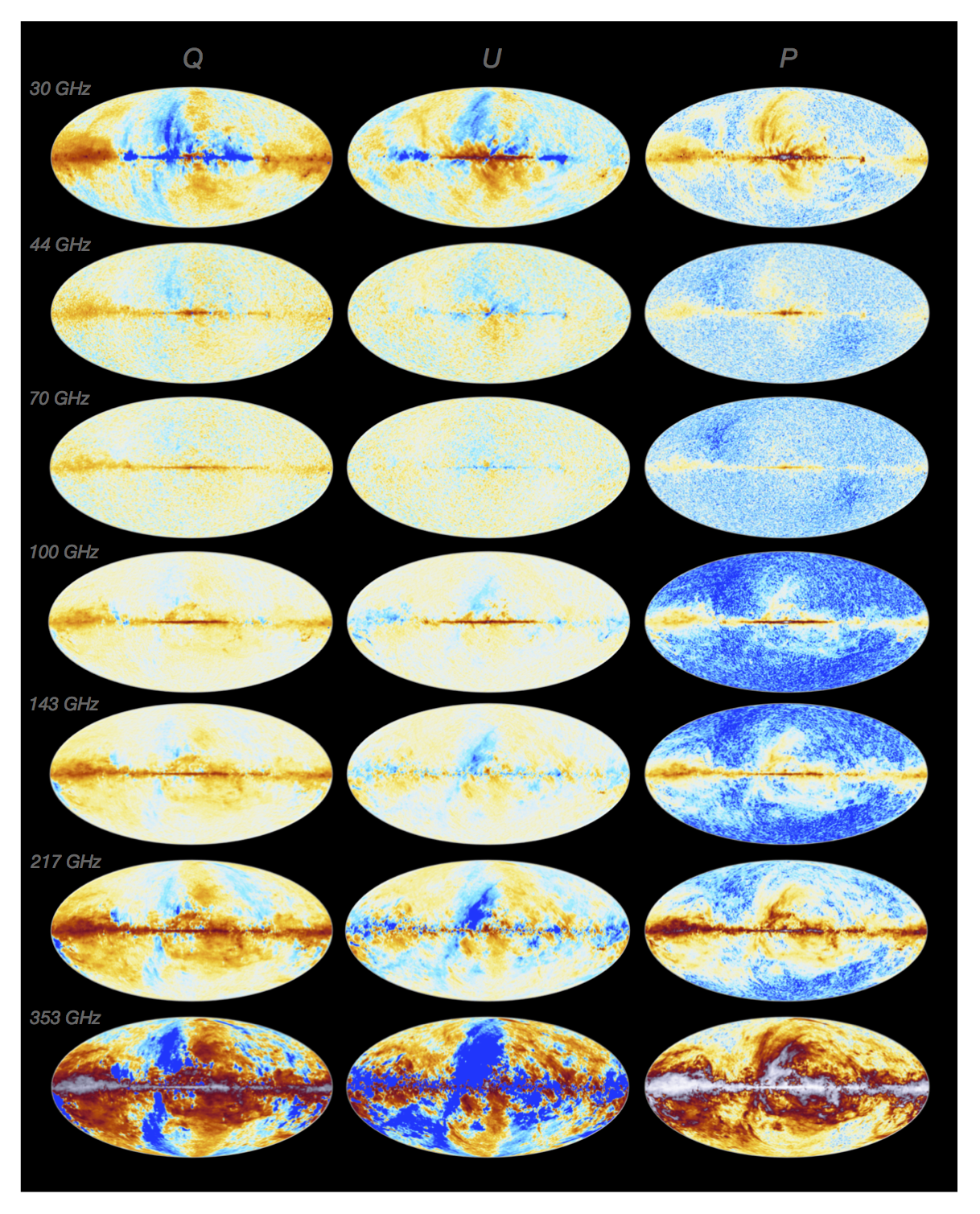The Planck Legacy Archive, which contains data from observations taken over four and a half years of service, is one of the main legacies of the mission. The archive has been prepared by ESA and brings together all of Planck's data products. This complete version of the Planck Legacy Archive is accompanied by some basic query tools as well as code for deriving cosmological parameters. Additional functionality will be added in future versions of archive.
The Planck data have been compiled into frequency maps that represent the total emission observed from the sky at each of the nine Planck frequencies. The emission arises from a wide variety of cosmological and astrophysical sources and these individual sources can be viewed and studied in individual maps, known in the archive as component maps.

All-sky maps of polarisation at seven of Planck's nine frequencies (only LFI from 30 to 70 GHz and HFI from 100 to 353 GHz, the bolometers at 545 and 857 GHz are not sensitive to polarization). From left to right: Stokes parameters Q, U, and P (polarised Intensity). P maps show the part of the total signal that is polarized. Credit: ESA and the Planck Collaboration
By observing such vast swathes of sky, Planck has also left as its legacy a series of extensive catalogues which contain lists of specific components – the point-like or compact sources of emission. These sources cover a wide range of objects – from pre-stellar cores to galaxy clusters – and a range of distances – from our Galaxy to the distant early Universe. A key feature of these catalogues is that they cover the whole sky in a rather unbiased way.
Even if the archive is now completed in terms of data, the mission experts continue to improve their understanding of the data and an ultimate version is expected in 2016.
A more in depth description of Planck mission archive content.
Direct access to the catalogue
A « Planck Legacy » discution group met this year from August 11 to 13 during the IAU general assembly (International Astronomical Union) in Honolulu, Hawaii.